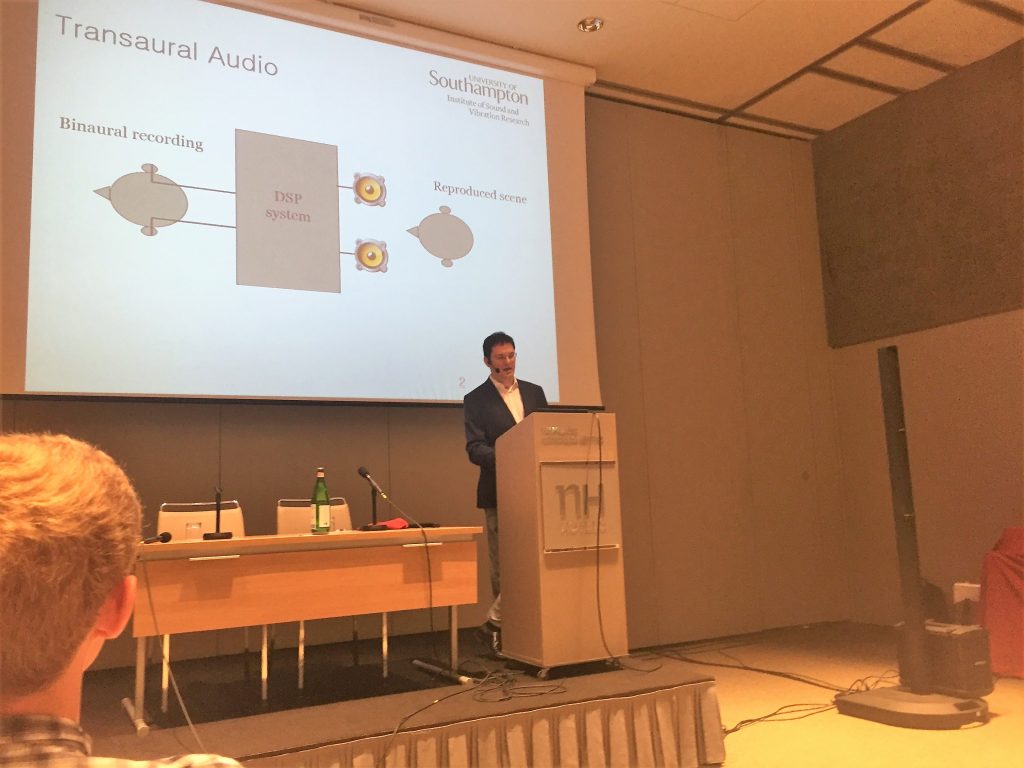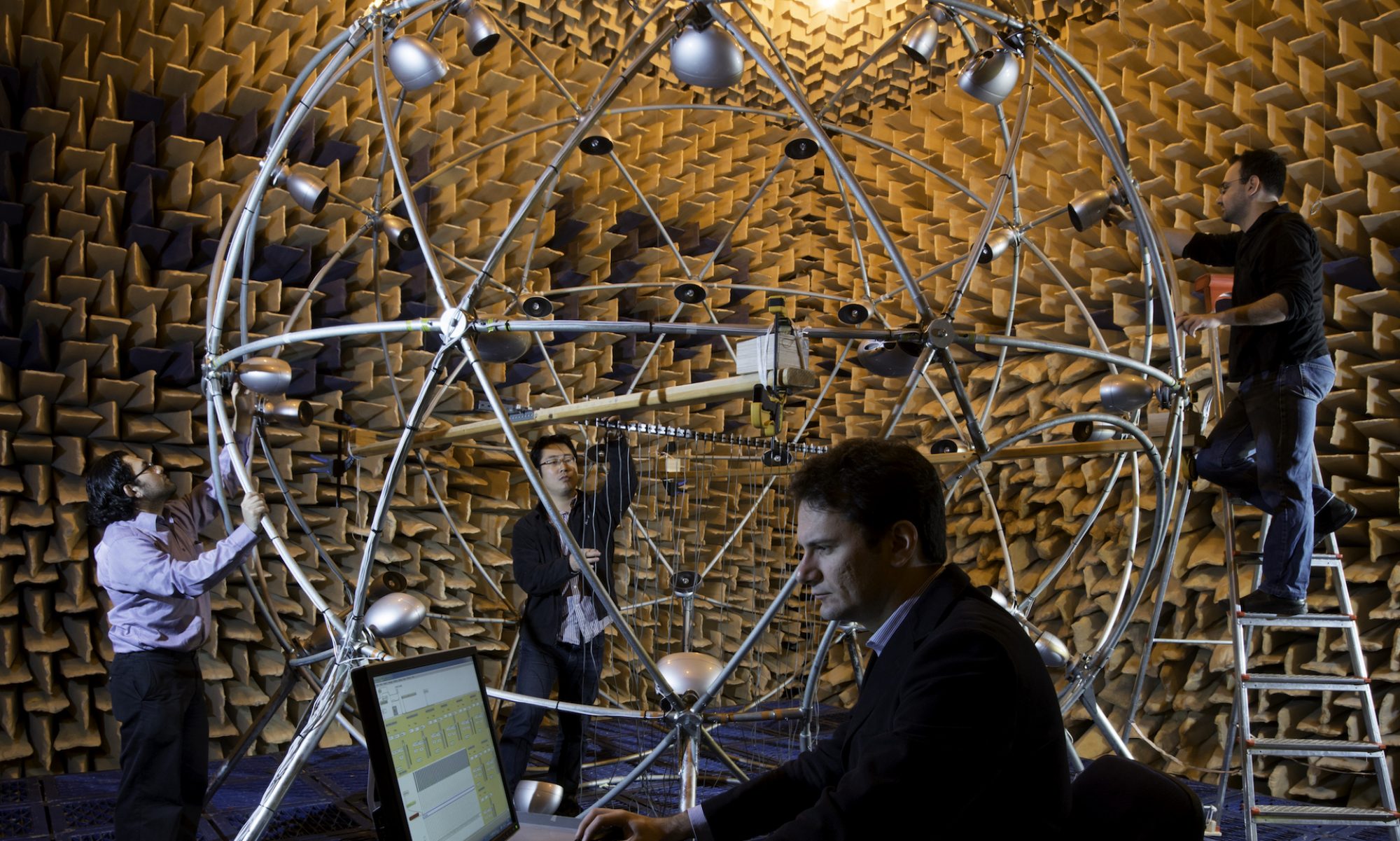From May 23rd-26th, the VAAE team participated in the 144th Audio Engineering Society (AES) convention held at the NH Milano Congress Center in Milan, Italy.
The AES is internationally known as the primary audio technology society of the world. Its members include a mix of audio professionals, engineers, musicians, developers, researchers, educators and students all contributing to the greater body of knowledge dedicated to audio technology. These contributions are made through the AES journal (JAES), conference papers, engineering briefs, technical demonstrations, etc.
The VAAE made two contributions to AES 144 this year:
On the opening day, VAAE Research Fellow Dr. Andreas Franck presented a poster on the Binaural Synthesis Toolkit (BST), an “open source, portable, and extensible software library for real-time and offline binaural synthesis” currently being developed by himself and fellow VAAE staff Giacomo Costantini. The poster summarised their more detailed engineering brief titled “An Open Realtime Binaural Synthesis Toolkit for Audio Research”, which includes further coauthors Chris Pike (BBC R&D) and VAAE team leader Dr. Filippo Fazi. In addition to the poster, Dr. Franck demoed custom audio plugins that allow the use of the BST in a digital audio workstation (DAW). The demo highlighted the dynamic binaural rendering capabilities of the BST by using headphones equipped with a low-cost head tracker which is supported directly by the toolkit.
On the final day of the conference, Dr. Filippo Fazi gave a talk on the paper “Stage Compression in Transaural Audio” couthored by himself and VAAE PhD student Eric Hamdan. The paper analyses the use of Tikhonov regularisation when creating cross-talk cancellation filters and how doing so leads to a phase difference error between the left and right ear binaural signals. In the low frequency region, this phase difference error maps to a smaller interaural time difference (ITD) than intended. Given the salience of low frequency ITD, this phenomenon indicates a potential shift of the percieved virtual source image to a more forward angular position. The authors call this shifting effect stage compression. In the picture below, Dr. Fazi can be seen giving the presentation on a nice Saturday morning in Milan!
Our work and the rest of the written work presented at AES 144 can be found here.
